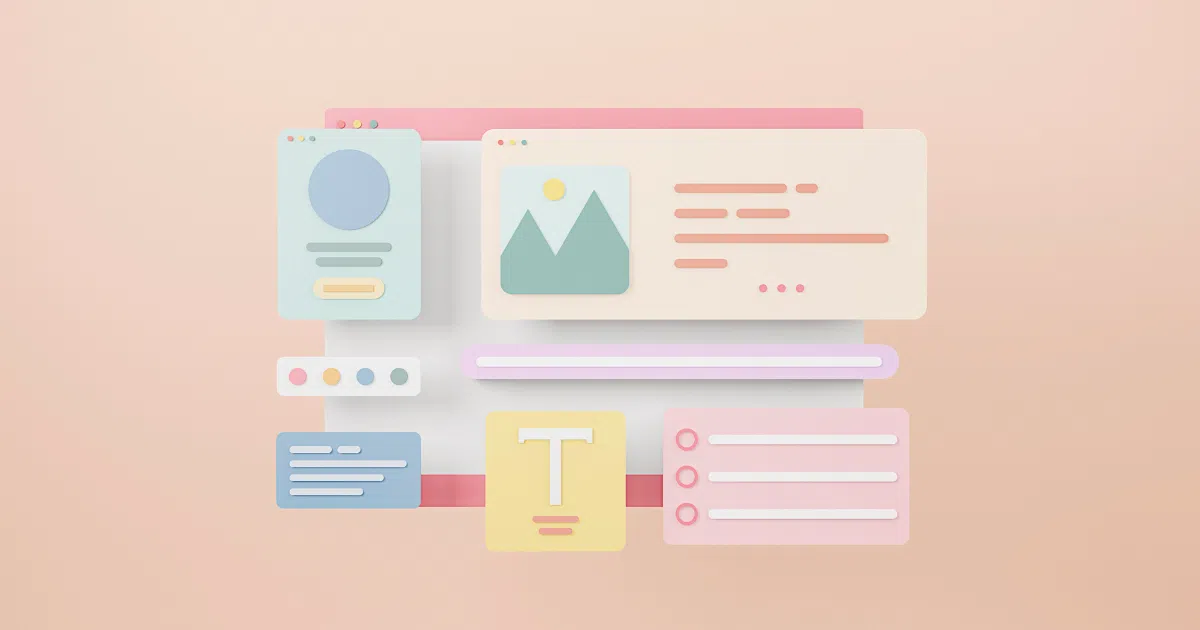In a fast-paced world, web users need to find the information they’re looking for – quickly.
According to HubSpot, the average time a user spends on a web page is 54 seconds. You have less than a minute to grab the user’s attention and convince them to read further.
How can you make users ‘stick’ and engage with your page?
We’ll discuss the importance of user experience in web design, and how UX benefits both customers and businesses.
Table of Contents
- What is user experience (UX)?
- How is user experience (UX) different from user interface (UI)?
- Key elements of user experience in web design
- What does the customer gain from good UX?
- How does your business benefit from providing a good user experience?
- Summary
- User Experience and Your Business – Ripple Design & Marketing
What is user experience (UX)?
User experience, often shortened to UX, refers to how users interact with something, like a website. UX considers whether the user feels the product meets their needs. For example, when we visit a website, we expect to easily find what we want, such as a login page.
How is user experience (UX) different from user interface (UI)?
What’s the difference between UX and UI? These two terms are commonly confused but don’t mean the same thing. User Experience (UX) is about users’ overall experience and feelings while using your product. For a website, the user experience provides solutions to customers’ pain points, like providing an easy-to-find login button.
User Interface (UI), on the other hand, focuses on the tangible design elements, like the appearance of the buttons on a website. UI represents how a user interacts with a service, like a website.
In short, UX answers customers’ questions: where do I log in?
UI defines what those solutions look like in the design: what colour is the login button?
Key elements of user experience in web design
Now that we understand UX, we can dive into its key elements.
The UX Design Institute breaks down the UX design process into five key elements: strategy, scope, structure, skeleton, and surface. Let’s explore how these elements transform a web design concept from abstract to concrete.
Strategy
At the strategy stage, we determine the direction for the web design. Here, we identify the customer pain points we want to solve with our design. A design strategy is then developed to meet our user’s needs and provide a smooth experience.
For example, we might strategize the easiest way to allow users to log in to our website.
Scope
Second, the design project’s scope is defined, including functional and content requirements.
Functional requirements determine all our design features. For our website login, we may allow users to save their user name for a quicker login process next time.
Content requirements detail the design features used, like text or images.
For the website, we’ll choose if the login button says “Log in” or “Sign in,” for example.
Structure
Third, the structure is determined. This process primarily consists of two features: interaction design and information architecture. Let’s examine what those two terms mean.
Interaction Design
When designing with user experience in mind, interaction design ensures a natural-feeling user experience. Interaction design is accomplished through features like scrolling animations, page transitions, etc. These elements aim to comfortably direct the user to their desired destination. When the user finds that your website is easy to use, they might come back in the future.
Information Architecture
Information Architecture refers to the structure of the design, in our case, the website. It organizes information clearly so that viewers can quickly find what they are looking for on a webpage.
Skeleton
Fourth, the UX design process reaches the skeleton stage. At this point, we determine the page’s structure. We visualize how the page layout and design will look.
Skeleton pages may use wireframes, which are visual outlines of a webpage. These simple visual outlines of the page’s features can be shown in greyscale when a user lands on your page to indicate that the page is loading. Once the page has loaded, the user sees the full version of the webpage.
The skeleton stage uses three types of design: interface, navigation, and information design. These three strategies ensure the webpage is well laid out, easy to navigate, and read.
With our website example, we may grey out the login section while the page loads. Once the page is loaded, the user can log in normally.
Surface
The final stage of UX design for websites is the surface. This stage is the most concrete of the five as it brings together the previous stages into a finished product. In this stage, we consider how to implement a finished product that keeps the user engaged and accomplishes their objectives quickly. This stage includes finalizing visual design elements like shapes, layout, and colour, as well as our content text.
For our website example, our login button could be the same colour as our company logo and have rounded edges to match the modern style of our website.
What does the customer gain from good UX?
1. Simplified website journey
A well-designed website will create a simple user experience. When users can easily find the buttons and pages they are looking for, they are less likely to become frustrated with the website and exit. The easier your website is to use, the more customers will want to visit.
2. Personalized experience
Good UX also enables you to personalize the user experience on your site. As a customer, you feel more valued and important when the website caters to your needs. A simple way to accomplish personalization in our login example is through a “Remember Me” feature when the user logs in. Or, greeting the customer with a customized landing page when they have logged in: “Good morning, [First Name].”
3. Improved satisfaction
A good user experience can improve user satisfaction. When users can easily find what they are looking for and the website works as they expect, they’re more likely to be satisfied. Features like skeleton pages can help accomplish these objectives.
4. Seamless integration across devices
Customers benefit from a simple user experience when they can use your website across all their devices without interruptions. A well-designed website should work seamlessly on both desktop and mobile formats and be similar across all devices to ensure a consistent experience for all users.
5. Increased accessibility
Ensuring accessibility makes your site useable by everyone and can ensure a consistently positive experience. The Centre for Excellence in Universal Design says, “Universal Design (UD) is the design and composition of an environment so that it can be accessed, understood and used to the greatest extent possible by all people regardless of their age, size, ability or disability.”
Easy ways to ensure accessibility on your website are by correctly tagging headers (H1, H2, etc.) and using descriptive words when naming image files.
How does your business benefit from providing a good user experience in its web design?
Investing in user experience may not seem worthwhile to some business owners, but the benefits of UX upgrades can be significant. Here are just five of the many benefits.
1. Increased conversion rates
Customers who easily find what they are looking for on your website are more likely to purchase. When UX is optimized, the number of clicks it takes for users to check out is reduced. A shorter journey increases the likelihood that customers will complete their purchase. A good UX can also decrease your site’s bounce rate, as users easily find the information they seek.
2. Better SEO performance
Effective UX design can also improve your website’s SEO performance. Features of UX, including detailed image descriptions, using H1/H2 headers, and optimizing your page’s accessibility, make your website more readable by Google. An organized and easy-to-read website allows it to potentially rank higher in search results.
3. Brand loyalty from customers
Users who have a positive experience using your website are more likely to make future purchases. Customer satisfaction can increase brand loyalty and give your business a competitive edge. If your website is the easiest and most satisfying to navigate among your competitors, customers will return repeatedly.
4. Brand cohesion
Customers are smart: They’ll notice if your branding isn’t consistent across all your platforms. Ensuring your website style matches the feel of your brand is essential. Customers will engage with your website if they recognize your brand’s website by its imagery, features, and text.
5. Brand perception
A well-designed and easy-to-use website can greatly increase brand perception among your target market. A high-quality website signals to customers that your business carefully manages all its customer touchpoints, including your website.
Improved brand perception through a positive web experience can also increase trust in your brand. Increased brand trust can be crucial for industries where customers value data security, such as banking or healthcare.
Summary
Overall, user experience is a key consideration in web design. UX consists of five stages: strategy, scope, structure, skeleton, and surface. These stages help take a web design idea from abstract to concrete. Customers benefit from positive user experiences because their purchase journey is simplified and personalized, improving their satisfaction and making the content accessible for any user. Businesses benefit from positive user experiences through increased conversion rates, better SEO performance, and improved brand loyalty, cohesion, and perception.
User Experience and Your Business – Ripple Design & Marketing
When you work with Ripple on your custom website design, you can be confident that your website will be optimized for a great user experience, contributing to positive SEO impacts.
To provide our clients with the highest-quality websites, we use WordPress, which offers us the best opportunities for customization. Our website designs are built with the user in mind, ensuring every touchpoint is customized to your business’s needs. Still unsure about the benefits of UX or how it can be implemented on your website? Connect with us today, and let’s discuss your website design needs!

